We use information collected through cookies and similar technologies to improve your experience on our site, analyze how you use it and for marketing purposes.
Your privacy settings
We and our partners use information collected through cookies and similar technologies to improve your experience on our site, analyze how you use it and for marketing purposes. Because we respect your right to privacy, you can choose not to allow some types of cookies. However, blocking some types of cookies may impact your experience of the site and the services we are able to offer. In some cases, data obtained from cookies is shared with third parties for analytics or marketing reasons. You can exercise your right to opt-out of that sharing at any time by disabling cookies.
Manage Consent Preferences
Necessary
Always ON
These cookies and scripts are necessary for the website to function and cannot be switched off. They are usually only set in response to actions made by you which amount to a request for services, such as setting your privacy preferences, logging in or filling in forms. You can set your browser to block oralert you about these cookies, but some parts of the site will not then work. These cookies do not store any personally identifiable information.
Analytics
These cookies and scripts allow us to count visits and traffic sources, so we can measure and improve the performance of our site. They help us know which pages are the most and least popular and see how visitors move around the site. All information these cookies collect is aggregated and therefore anonymous. If you do not allow these cookies and scripts, we will not know when you have visited our site.
Embedded Videos
These cookies and scripts may be set through our site by external video hosting services likeYouTube or Vimeo. They may be used to deliver video content on our website. It's possible for the video provider to build a profile of your interests and show you relevant adverts on this or other websites. They do not directly store personal information, but are based on uniquely identifying your browser and internet device. If you do not allow these cookies or scripts it is possible that embedded video will not function as expected.
Google Fonts
Google Fonts is a font embedding service library. Google Fonts are stored on Google's CDN. The Google Fonts API is designed to limit the collection, storage, and use of end-user data to only what is needed to serve fonts efficiently. Use of Google Fonts API is unauthenticated. No cookies are sent by website visitors to the Google Fonts API. Requests to the Google Fonts API are made to resource-specific domains, such as fonts.googleapis.com or fonts.gstatic.com. This means your font requests are separate from and don't contain any credentials you send to google.com while using other Google services that are authenticated, such as Gmail.
Marketing
These cookies and scripts may be set through our site by our advertising partners. They may be used by those companies to build a profile of your interests and show you relevant adverts on other sites. They do not store directly personal information, but are based on uniquely identifying your browser and internet device. If you do not allow these cookies and scripts, you will experience less targeted advertising.
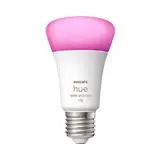
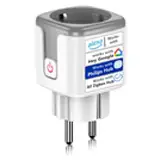
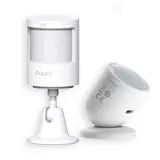
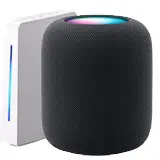
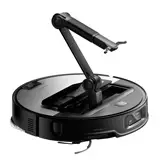

Artificial intelligence in smart homes: present and future
Imagine coming home after a long day. The lights softly come on, your favorite song starts playing, and the temperature is perfect. No, it's not magic, it's AI in your smart home!
Artificial Intelligence and Smart Homes: The Comfort Revolution
Artificial intelligence (AI) is transforming the way we live. It's not just about futuristic robots, but practical solutions that make our lives easier and more efficient. AI-powered smart homes are a clear example of this revolution.
But what does it really mean to have an AI-powered smart home? It means your devices aren't just connected, they're also able to learn your habits, anticipate your needs, and optimize energy consumption. This translates to greater comfort, safety, and savings.
AI in Your Home: The Present
Today, there are already many applications of artificial intelligence in smart homes. Here are just a few examples: From virtual assistants that manage daily tasks to security systems that learn from inhabitants' routines, AI is transforming the way we interact with our environment. In addition, there are numerous applications to control smart devicesThe new home automation system, allowing the adjustment of lighting, temperature and other household appliances from any location. These innovations not only improve comfort, but also contribute to a more efficient use of energy in our homes. These applications range from virtual assistants that control devices to security systems that use facial recognition. The smart home automation enables users to program and manage their appliances efficiently, improving comfort and energy efficiency. In addition, the integration of sensors and machine learning technologies is transforming the way we interact with our homes.
The key is interconnection. Devices communicate with each other thanks to the Internet of Things (IoT), and AI allows them to make intelligent decisions based on the collected data.
How AI Learns in Your Home
AI isn't magic, it's machine learning. Devices collect data about your habits, preferences, and usage patterns. Then, they use algorithms to analyze this information and improve their performance over time.
For example, a smart thermostat learns what temperature you like to have the house at night and adjusts it automatically. A security system with facial recognition learns to identify your family members and allows access without the need for keys.
The more you use your smart devices, the more they will learn and better adapt to your needs.
The Bright Future of AI-Powered Smart Homes
The future of AI in smart homes is even more exciting. The technology is expected to be even more integrated, intuitive, and personalized.
Home of the Future Predictions
Innovative Use Cases
Imagine a refrigerator that alerts you when you're running low on milk and automatically orders more from the supermarket. Or a smart mirror that analyzes your skin and recommends facial care products. Or a lighting system that adapts to your mood to enhance your productivity or relaxation.
AI could also help elderly people live independently for longer. Sensors could detect falls or changes in behavior and alert emergency services or family members.
Challenges to Overcome
While the future of AI in smart homes is promising, there are also some challenges that need to be addressed:
The industry must work to overcome these challenges and ensure that AI in smart homes is accessible, secure, and user-friendly for everyone.
Practical Tips for Integrating AI into Your Home
Ready to turn your house into a smart home? Here are some tips to get started:
Best Practices for Privacy
Privacy is a major concern when using smart devices. Here are some best practices to protect your information:
Comparative Table of Virtual Assistants
Conclusion: A Smart Home for a Better Future
Artificial intelligence is transforming the way we live, and smart homes are just the beginning. From virtual assistants controlling lights and temperature to security systems protecting you from intruders, AI is making our lives easier, safer, and more efficient.
The future of AI-powered smart homes is bright. The technology is expected to become even more integrated, intuitive, and personalized, offering an unprecedented level of comfort and convenience. However, it's important to address the challenges related to privacy, security, and cost to ensure this technology is accessible and beneficial for everyone.
Start exploring the possibilities of AI in your home and discover how it can improve your life. Share this article with your friends and family so that they can also discover the future of smart homes. By doing so, you can enjoy a more comfortable, efficient and secure environment. Don't forget to research and compare options before choosing a smart home system that fits your needs and lifestyle. With the right technology, your home can become a truly innovative space.
Related Posts
10 incredible houses of the future that will change the way we live
Technology and architectural design are advancing rapidly, allowing us to dream of futuristic homes that once seemed impossible. Here are 10 amazing concepts of houses of the future that could soon become reality. 1. Bubble house Transparent homes that integrate with nature, equipped with intelligent systems for perfect climate control. 2. Underground houses ...
Future homes: what will they be like in 2030?
Can you imagine what your house will be like in 2030? Get ready for a future full of technology, sustainability, and comfort! The homes of the future will not only be places to live, but also smart spaces that will adapt to our needs and help us live more efficiently and ecologically. Forget what you know, because...
The future of the smart home: trends, technologies and perspectives (2025-2030).
Smart home technology is rapidly transforming our daily lives. Find out what our homes will look like in 2030 and why it is important to prepare for these innovations today. What is a smart home in 2025? Today, technologies such as Zigbee, Matter and Thread dominate the market thanks to their stability and compatibility with multiple devices. ...